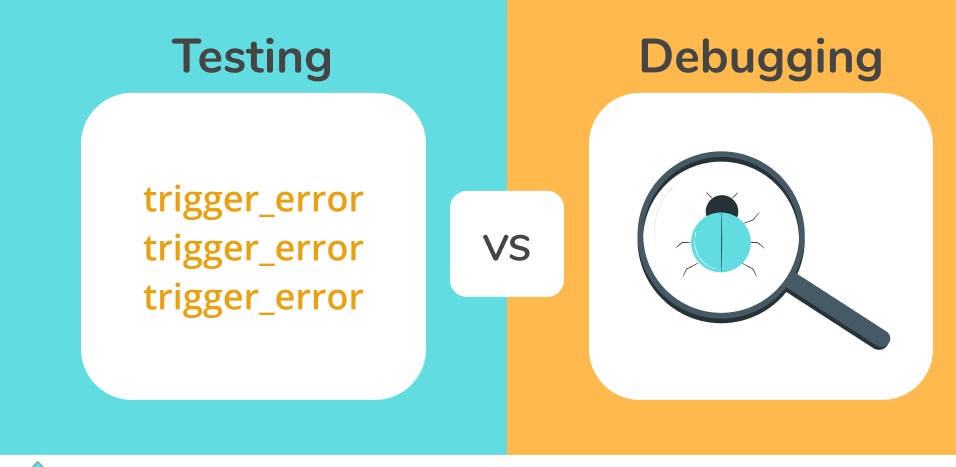JUnit vs. NUnit: JUnit and NUnit are both unit testing frameworks used for testing applications written in Java and .NET languages respectively. While they have some similarities, there are also significant differences between the two. In this blog, we will compare JUnit vs NUnit and explore their differences and similarities with examples and a comparison table.
JUnit
JUnit is a widely used testing framework for Java programming language, which provides annotations and APIs to write and run tests. It comes with a test runner that can execute the tests and generate the test reports. Let’s take an example of a simple JUnit test:
java
import org.junit.Test; import static org.junit.Assert.assertEquals; public class MyTest { @Test public void testMethod() { String str = “JUnit”; assertEquals(“JUnit”, str); } }
NUnit
NUnit is a testing framework for .NET languages, which provides annotations and APIs to write and run tests. NUnit comes with a test runner that can execute the tests and generate the test reports. Let’s take an example of a simple NUnit test:
c#
using NUnit.Framework; [TestFixture] public class MyTest { [Test] public void TestMethod() { string str = “NUnit”; Assert.AreEqual(“NUnit”, str); } }
http://informationarray.com/2023/07/29/junit-vs-selenium/
Comparison Table
| Features | JUnit | NUnit |
| Annotations | @Test, @Before, @After, @Ignore | [Test], [SetUp], [TearDown], [Ignore] |
| Assertions | assertTrue, assertFalse, assertEquals, assertNull, assertNotNull, assertThrows | Assert.True, Assert.False, Assert.AreEqual, Assert.AreNotEqual, Assert.IsNull, Assert.IsNotNull, Assert.Throws |
| Parameterized Tests | Supported | Supported |
| Dynamic Tests | Not Supported | Not Supported |
| Execution Order | Sequential | Sequential |
| Architecture | JUnit 4 architecture | NUnit 3 architecture |
| IDE Support | Eclipse, IntelliJ IDEA, NetBeans | Visual Studio |
Annotations
Both JUnit and NUnit provide annotations to write and run tests, but the syntax and naming conventions are different. For example, JUnit uses @Test, @Before, @After, and @Ignore annotations, while NUnit uses [Test], [SetUp], [TearDown], and [Ignore] attributes.
Assertions
Both JUnit and NUnit provide assertions to check the expected output of the code. The syntax and naming conventions are different. For example, JUnit uses assertTrue, assertFalse, assertEquals, assertNull, assertNotNull, and assertThrows methods, while NUnit uses Assert.True, Assert.False, Assert.AreEqual, Assert.AreNotEqual, Assert.IsNull, Assert.IsNotNull, and Assert.Throws methods.
Parameterized Tests
Both JUnit and NUnit support parameterized tests, which allow testing the same code with different inputs. The syntax and naming conventions are different. For example, JUnit uses @ParameterizedTest and @ValueSource annotations to pass parameters, while NUnit uses [TestCase] attribute to pass parameters.
Dynamic Tests
Dynamic tests are tests that are generated at runtime. JUnit does not provide support for dynamic tests, while NUnit provides support through the use of yield keyword.
Execution Order
Both JUnit and NUnit run the tests sequentially, but NUnit allows controlling the execution order through the use of attributes like [Order].
Architecture
JUnit is based on JUnit 4 architecture, while NUnit is based on NUnit 3 architecture. NUnit 3 architecture provides more flexibility and modularity, making it easy to extend and customize.
IDE Support
JUnit is supported by popular IDEs like Eclipse, IntelliJ IDEA, and NetBeans, while NUnit is supported by Visual Studio, making it easy to write, run, and debug tests in the IDE.
Parallel Execution
NUnit provides support for parallel execution, which can speed up the execution time of tests by running them in parallel. JUnit does not provide built-in support for parallel execution, but it can be achieved using external tools like Maven or Gradle.
Data Sources
NUnit provides support for various data sources like CSV files, XML files, and databases, which can be used to generate test cases at runtime. JUnit provides limited support for data sources through the use of parameterized tests.
Mocking Frameworks
Both JUnit and NUnit support integration with mocking frameworks like Mockito and Moq, which can be used to mock dependencies and isolate the code being tested from external dependencies.
Cross-platform Compatibility
NUnit is cross-platform and can run on multiple operating systems like Windows, Linux, and macOS. JUnit is primarily designed for Java and can run on any platform that supports Java.
JUnit and NUnit are both popular unit testing frameworks used for testing applications written in Java and .NET languages respectively. While they have some similarities, there are also significant differences between the two. It is recommended to choose a testing framework based on the programming language being used and the specific requirements of the project. If you are working with Java, JUnit is a good choice, while NUnit is a good choice for .NET languages. Both frameworks provide rich functionality and allow developers to write effective and efficient tests for their applications.









